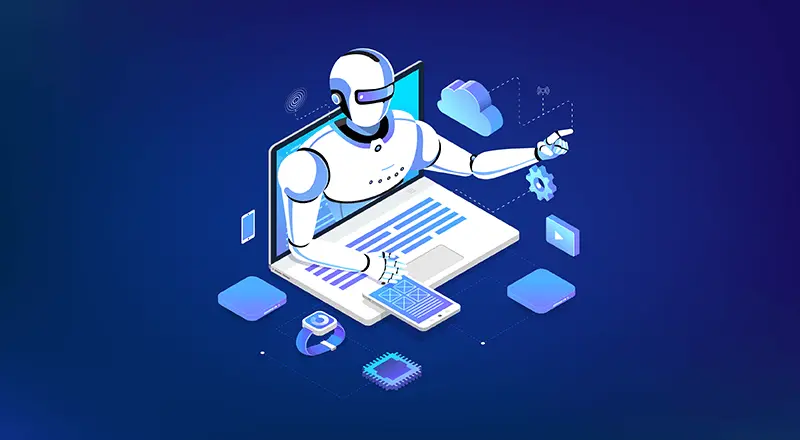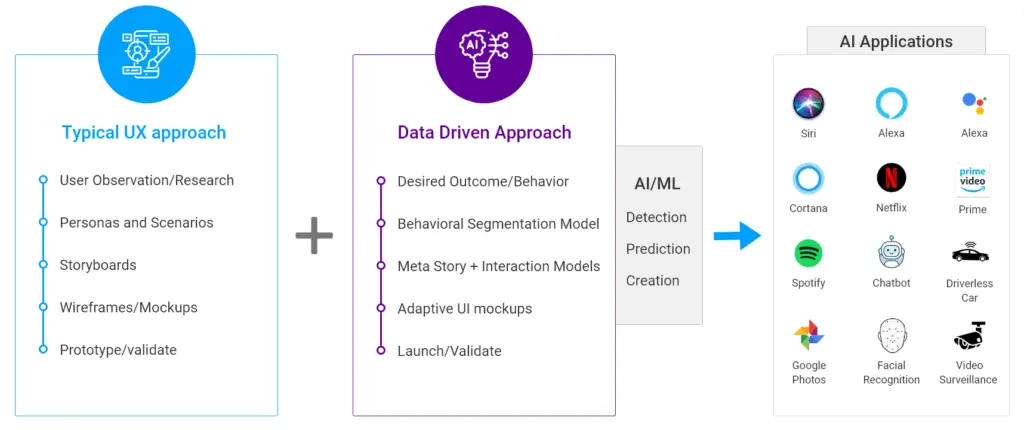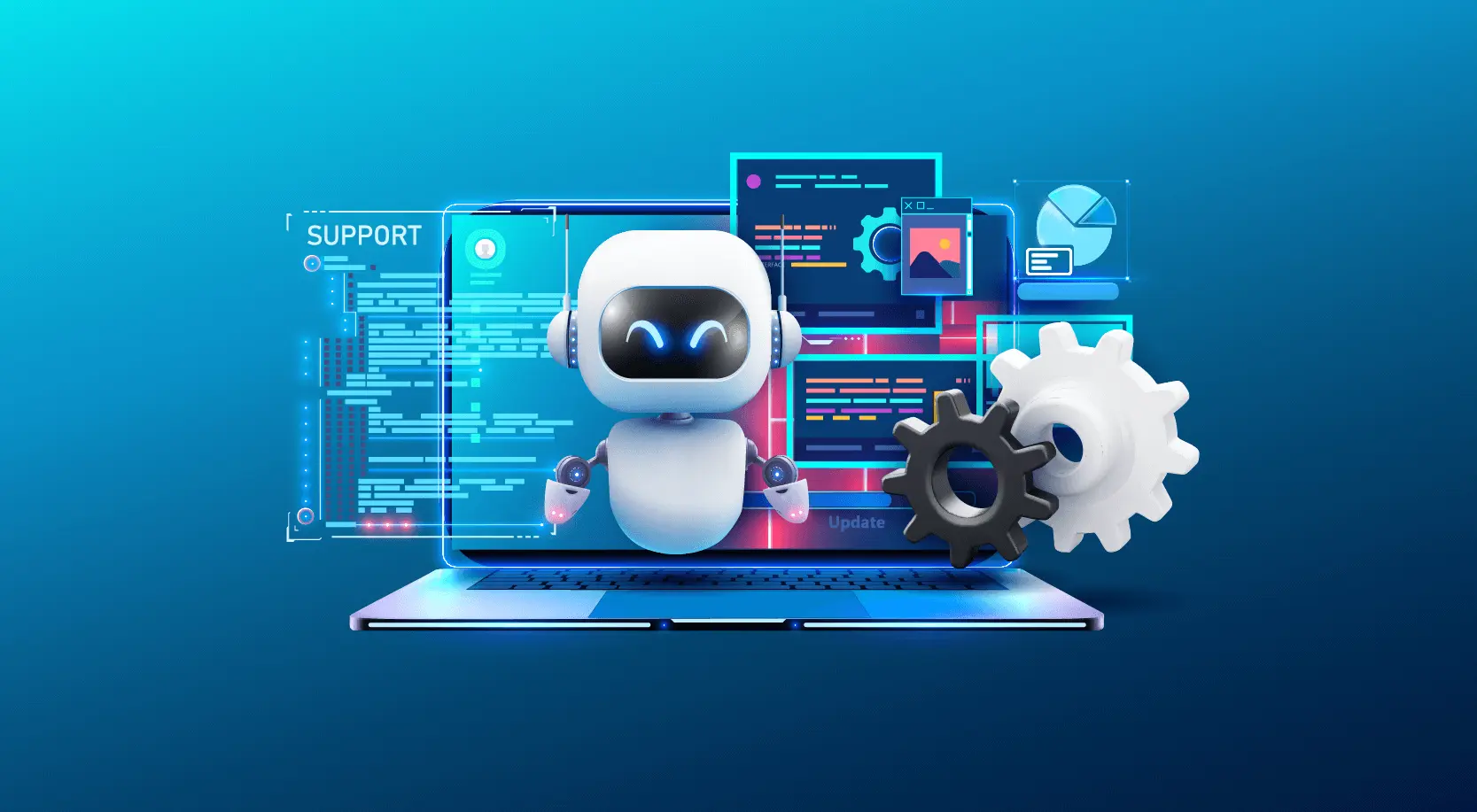
Designing Better User Experience with Artificial intelligence
In this era of web and mobile revolution, Artificial Intelligence (AI) will cause us to rethink, reshape, and reconsider what’s possible in virtually every experience we build. In many companies, UX designers have started an effort called “human-centered machine learning” to help focus and guide that conversion. Keeping this in mind, we look across products to see how AI can augment human needs while defining experience for them. In this article, we’ll show you why User Experience (UX) can provide insights into how you can improve UX through AI.
What is User Experience? And why is it important?
Many people seem to think of user experience as a controllable outcome of a design process. But your product doesn’t define a user’s experience. User’s behavior, attitudes, and emotions do. Thus, user experience is a feeling. It is about how a person feels when they interact with a product, system, or service. This is a customer-centric era, which means companies focus on learning more about their audience’s needs so they can offer the best possible products, services, and experiences to satisfy their needs. UX design is all about creating an experience for people so they will stay loyal to a particular brand. Thanks to rapid innovation in AI and machine learning, which provides powerful new means of delivering better UX.
AI as a capability
First, designers should treat AI as a capability. Ultimately, the primary purpose of AI is to serve human interests: helping us make decisions, derive insights, and augment/automate our actions. As designers, we must maintain a human-focused approach to crafting experiences that leverage AI. This means we are keeping people in mind throughout every step of the process: discovering the problem, building our models, iterating our approach, and calibrating the experience.
The power of AI in inheriting UX comes down to two significant applications: detection and prediction. Detection is about interpreting the present, and prediction is about the way of the future. Interestingly, machines can also do generative or creative tasks. However, these are still a marginal application. Let us understand a preferred way of thinking about machine learning applications – By combining detection and prediction, we can achieve impressive overall results. For example, while thinking about a self-driving car – first detect the traffic signs, other vehicles, and pedestrians on the road. Then combine the prediction of vehicular and pedestrian movements, which leads to the creation of an autonomous vehicle.
Before we consider real-life examples of how AI is being used to improve the user experience, let’s look at the UX process and what makes it possible for AI to enhance the UX.

Artificial intelligence is dependent on continuous learning and leveraging data, the same can be said for UX design; it’s a continual process of testing and optimizing based on user feedback.
Traditionally, UX teams look into heat maps and split testing when they are trying to boost customer experience. As it can collect a lot more data and analyze it quicker, AI will inevitably take over it. This provides an excellent potential for UX teams, as they can use technology to track and analyze large data sets. Already, many e-commerce businesses harness AI to improve UX, learning more from user behavior to tailor the site design accordingly. Before AI, this complex data analysis was impossible. Now, businesses can react instantly to provide a continuous and improved user experience.
Human-Centered AI Design
In a way, the end goal of AI and UX are the same: both are designed to interpret human behavior and anticipate users’ next action. Predictive analytics is the foundation of both, and it is this intersection that creates an opportunity for both companies and end-users.

While designing an AI-driven experience for user we should keep system’s reliability in our mind. The magnitude and accuracy that which AI helps drive the experience cultivates trust between the user and the experience. This trust helps create habit forming behavior, which will motivate the users towards the AI application. So UX designers should always be first asking: How can we solve the salient user problem? And then ask, can we solve it better by leveraging AI capabilities? Hence, we can say AI-driven UX powers intelligent computing to simplify and augment human-centered experiences by accelerating decision-making, efficiency and delight.
In order to achieve AI capabilities in our digital world, it is important that designers apply the following new set of rules that adapts to AI’s strengths and constraints.
- Identify and embrace the human need and ask how AI can mitigate pain points and user flow, reduce cognitive load and deliver better outcome
- Collaboration between UX and Data Science team where UX team will provide appropriate user context and goals that help data science team in crafting models. Then latter both teams can together train the required model to solve user problems and cover those capabilities in a human-centric manner
- When AI is used to augment experiences, you must understand your users’ expertise, expectations, the complexity of the AI-driven augmentation, and the magnitude of the decisions/outcomes. For example, a cardiologist diagnosing a heart condition would need all the data and considerations that went into the diagnose than the purchase a cheapest concert ticket, where the consequence of an inaccurate decision is nominal
- The AI application should provide consistent feedback that will help in creating fluid, engaging, and responsive human experience. The feedback should be as human as possible
- To gain users trust, the AI application should anticipate, mitigate, and prevent incorrect responses
Conclusion
UX designers and researchers need to be the collaborators of smart solutions to keep in check that AI technology works for humankind. Going forward, we must consider the capabilities and roles of human vs machine. When will machines make decisions and act and when will they augment or support people making decisions? How people will feel with these AI solutions? Do they feel like the solution is trustable, easy, and fun, or do they feel frustrated?
Experience designers must thrive to learn, share, collaborate, and participate in research & development both at a strategic level and product development cycle. If designers can envision systems that communicate, remember, learn, and act, you will create powerful new products that are more adaptive, immersive, and better able to solve customer challenges.






